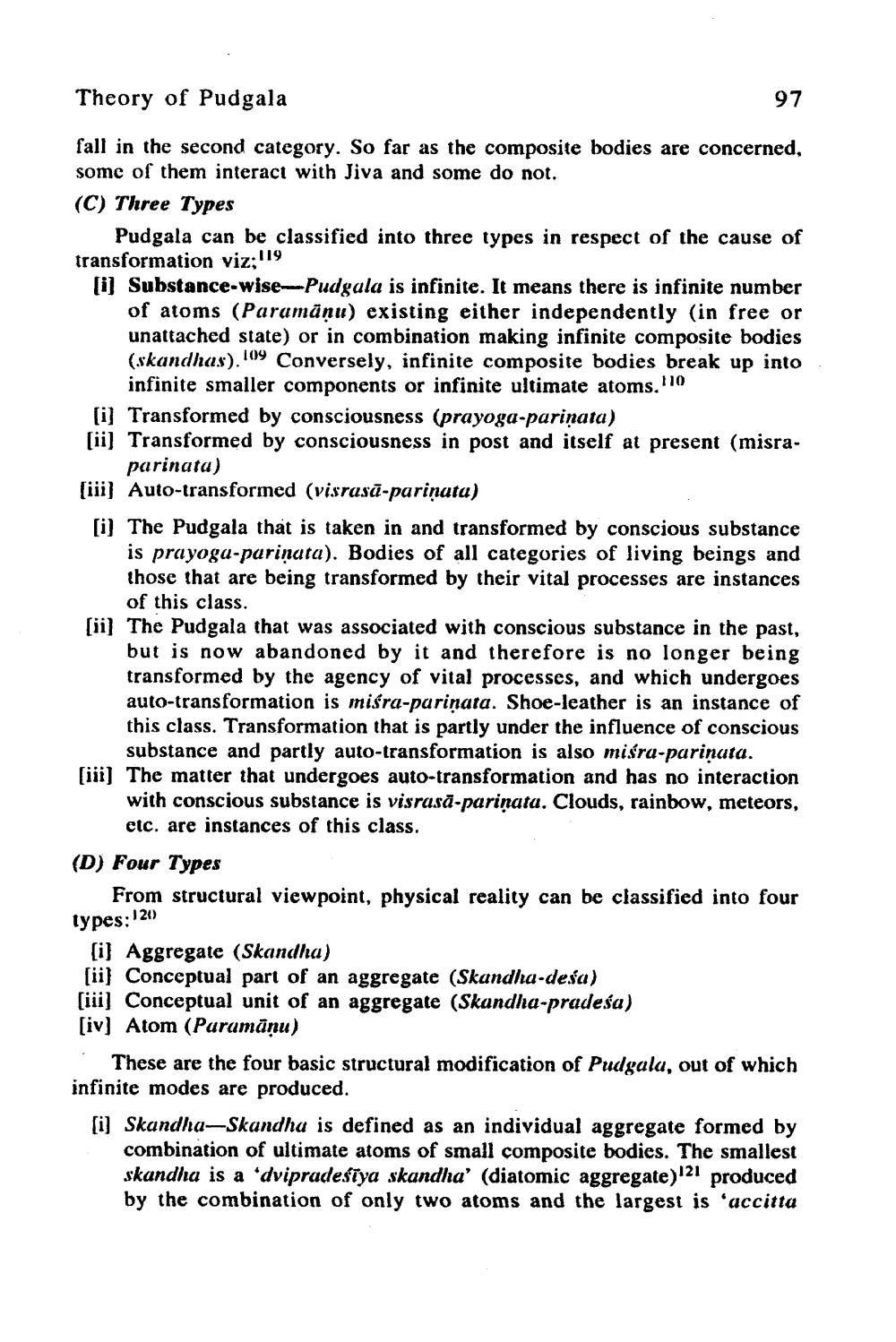________________
Theory of Pudgala
97
fall in the second category. So far as the composite bodies are concerned, some of them interact with Jiva and some do not. (C) Three Types
Pudgala can be classified into three types in respect of the cause of transformation viz; 119 i] Substance-wise-Pudgala is infinite. It means there is infinite number
of atoms (Paramāņu) existing either independently (in free or unattached state) or in combination making infinite composite bodies (skandhas). 109 Conversely, infinite composite bodies break up into
infinite smaller components or infinite ultimate atoms."10 (i) Transformed by consciousness (prayoga-parinata) [ii] Transformed by consciousness in post and itself at present (misra
parinata) [iii] Auto-transformed (visrasā-parinata)
[i] The Pudgala that is taken in and transformed by conscious substance
is prayoga-parinata). Bodies of all categories of living beings and those that are being transformed by their vital processes are instances
of this class. [ii] The Pudgala that was associated with conscious substance in the past,
but is now abandoned by it and therefore is no longer being transformed by the agency of vital processes, and which undergoes auto-transformation is miśra-parimata. Shoe-leather is an instance of this class. Transformation that is partly under the influence of conscious
substance and partly auto-transformation is also miśra-parinata. (iii) The matter that undergoes auto-transformation and has no interaction
with conscious substance is visrasa-parinata. Clouds, rainbow, meteors,
etc. are instances of this class. (D) Four Types
From structural viewpoint, physical reality can be classified into four types: 20
(i) Aggregate (Skandha) [ii] Conceptual part of an aggregate (Skandha-desa) [iii] Conceptual unit of an aggregate (Skandha-pradeśa) [iv] Atom (Paramānu)
These are the four basic structural modification of Pudgala, out of which infinite modes are produced. si) Skandha–Skandha is defined as an individual aggregate formed by
combination of ultimate atoms of small composite bodies. The smallest skandha is a 'dvipradesiya skandha' (diatomic aggregate)121 produced by the combination of only two atoms and the largest is 'accitta




